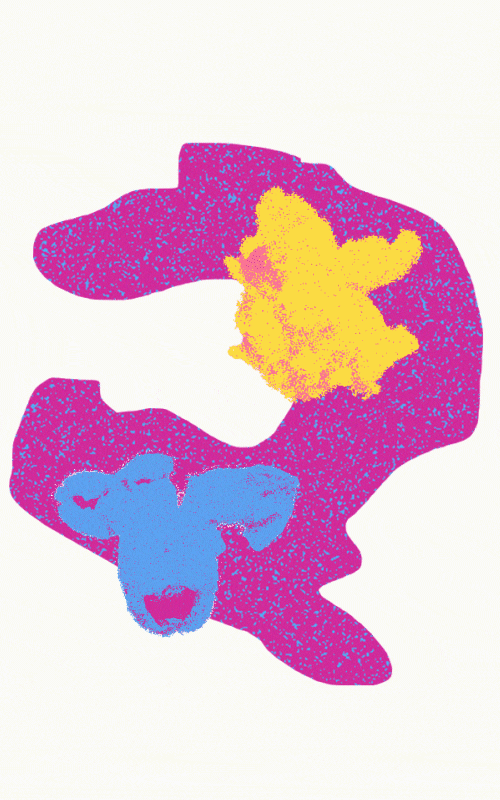Like every human, each bottle of vinegar has a mother somewhere, and sharing that mother can be an act of extraordinary intimacy. Vinegar is not just wine left to turn—the alcohol must be converted to acetic acid with the help of mycoderma aceti bacteria and oxygen. Over time, that bacteria forms a gooey blob in your vinegar crock that can be divided up to plop into jars on countertops all over the neighborhood. Add wine, cover with breathable cheesecloth, and a month later you will have a richly complex vinegar for deglazes and vinaigrettes.
Vinegar is just one example of perpetual or self-feeding “infinity” foods. In now times, upcycling and creative re-use help households handle excess. Infinity foods take this concept to a supreme status level. When we make vinegar from a shared mother, we are not just reusing waste, we are preserving the essence of our waste for generations to come.
Whiskey geeks create infinity bottles to preserve and protect their favorite specimens. The process is simple. Find a suitably elegant decanter, add dribs and drabs of your special bottlings. Remembering the old trope–garbage in/garbage out–may help create a blend that is better-stronger-faster than any of its parts. Some collectors create these “Infinite Reserve” memorial bottles in honor of loved ones, to consume while reflecting on life’s ever-changing nature, or to give as one-of-a-kind gifts.
At Enrique Olvera’s Mexico City restaurant Pujol, chefs combine fresh black mole, the complex sauce of nuts, seeds, and chiles, with a mole mother that has been perpetuating for many years, in a dish called “Mole madre, mole nuevo.” Fans love Olvera’s bold take on the Mexican classic, presented bulls-eye style on a plate with a dab of new mole in the center for an ever evolving comparison.

preserving the essence of our waste preserving the essence of our waste
In traditional Amish circles, a family passes on their friendship bread starter to young marrieds setting up house for the first time, handing down the recipe and technique for the sweet, tender loaves along with the key ingredient. This form of ancestral cookbook writing comes with the added burden of a mouth to feed. Like all sourdough starters (and Pujol’s mole), that jar of friendship bread mother must be coddled and fed regularly. Oskar Singer of Rye Humor Baking created his starter in 2018, and its children and grandchildren exist in home and professional kitchens all over Chicago. “It’s cute. You have to feed it,” he says, “you have to let it grow in the same conditions–same temperature, same moisture, hydration levels, same form of sugar. You’re basically saying, okay, I want these organisms, so I’m going to create the environment in which they thrive and other things don’t. So you’re like simulating natural selection…taking like a specific population” to maintain the starter.
Similarly, if a baker has extra dough from the previous day’s batch of bread, they can add it to the next batch of dough. Biga, poolish, sponge, and pâte fermentée are all traditional examples of these pre-ferments. “Essentially,” says Singer, “these yeasted pre-ferments are just ways to get more flavor and better texture and shelf life out of breads without having, like, super wacky doughs.”


Proceed with caution, as sometimes taking the seed of success and transplanting it to start a new success comes dangerously close to resembling a fecal transplant. Preserving a germ of rancidity for the next batch of stew may have zero flavor or health benefits aside from sounding like a Queensryche song title.
Does cooking burgers in 100 year old recycled grease really have a positive impact on the flavor of said burgers? Dyer’s has been betting on it since 1912. The grease, aka Vitamin G, gets strained and reused daily, and that same grease was securely transported in an armored car when the Memphis restaurant relocated. Seems questionable both from a food safety and a chemical standpoint, but legends are legends and they sell hundreds of burgers daily on bustling Beale Street.
Then there’s the abomination known as perpetual stew, which should really be called eternal soup because it sounds like purgatory, that place between heaven and hell where only questionable leftovers are consumed. Examples abound on the internet, like references to a 1981 New York Times article in which a bachelor teaches us this trick for serving essentially if not literally same Pot-au-feu to guests over a 21 year period, while reddit threads warn of the dangers of adding potatoes and other thickeners to the brew for fear of it becoming too thick, and thus impossible to heat to a high enough temperature to destroy bacteria. Is it really worth risking botulism (which can thrive at even higher temperatures than bacteria) to keep throwing scraps of food into a murky, perpetually simmering pot?
That said, there are plenty of wholesome and healthy ways to perpetuate active cultures. Homemade yogurt is a fantastic self feeder that’s easy to make at home and safely share with your community. A big dollop of the last batch of live yogurt cultures inoculates the pot of hot milk that will become the next week’s breakfasts. There’s always someone posting on Facebook about their kombucha SCOBY coming up for grabs. Grab one and start fermenting sweet tea into that refreshing bubbly beverage, or make kvass using sourdough starter and stale bread. Kefir grains are another SCOBY that self-seeds and perpetuates. Sandor Katz’s iconic book The Art of Fermentation is a great place to start learning to DIY.

Many Asian cuisines historically lean heavily on fermentation and mold cultures for preserving food and amping flavor–fermented black beans, miso, shoyu, koji, kimchi, amazake, doenjang, and gochujang are examples. Nukazuke, Japanese pickled vegetables made with a wild fermented rice bran, are less common in Western kitchens but incredibly fun to make and sustain. Roasted rice bran is seasoned and mixed with water to form a thick paste, then packed into a crock. Salted vegetables are embedded in the nuka pot, which encourages the wild fermentation caused by bacterial growth. Once the pot gets going, add vegetables regularly for their 1-2 day pickling spa treatment. Then, share the bounty with your neighbors and don’t be surprised when they start leaving baskets of zucchini at your door.




